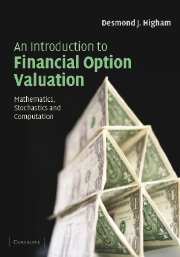OUTLINE
efficient market hypothesis
examples of real asset data
tests for i.i.d. and normality
assumptions for the model
Motivation
In order to value an option, we must develop a mathematical description of how the underlying asset behaves. This chapter gives examples of real stock market data and performs some basic statistical tests. The tests pave the way for the mathematical description that we introduce in the next chapter, but are definitely not intended to form an exhaustive justification of the model. We begin with an outline of a key hypothesis, and finish by listing some of the assumptions that will go into our analysis.
Efficient market hypothesis
The price of an asset is, of course, a measure of investors' confidence, and, as such, is strongly dependent upon news, rumours, speculation, and so on. Although an oversimplification, it is reasonable to assume that the market responds instantaneously to external influences, and hence:
the current asset price reflects all past information.
This simple conclusion is known as the (weak form of the) efficient market hypothesis. Under this hypothesis, if we want to predict the asset price at some future time, knowing the complete history of the asset price gives no advantage over just knowing its current price – there is no edge to be gained from ‘reading the charts.’
From a modelling point of view, if we take on board the efficient market hypothesis, then an equation to describe the evolution of the asset from time t to t + Δt need involve the asset price only at time t and not at any earlier times.
